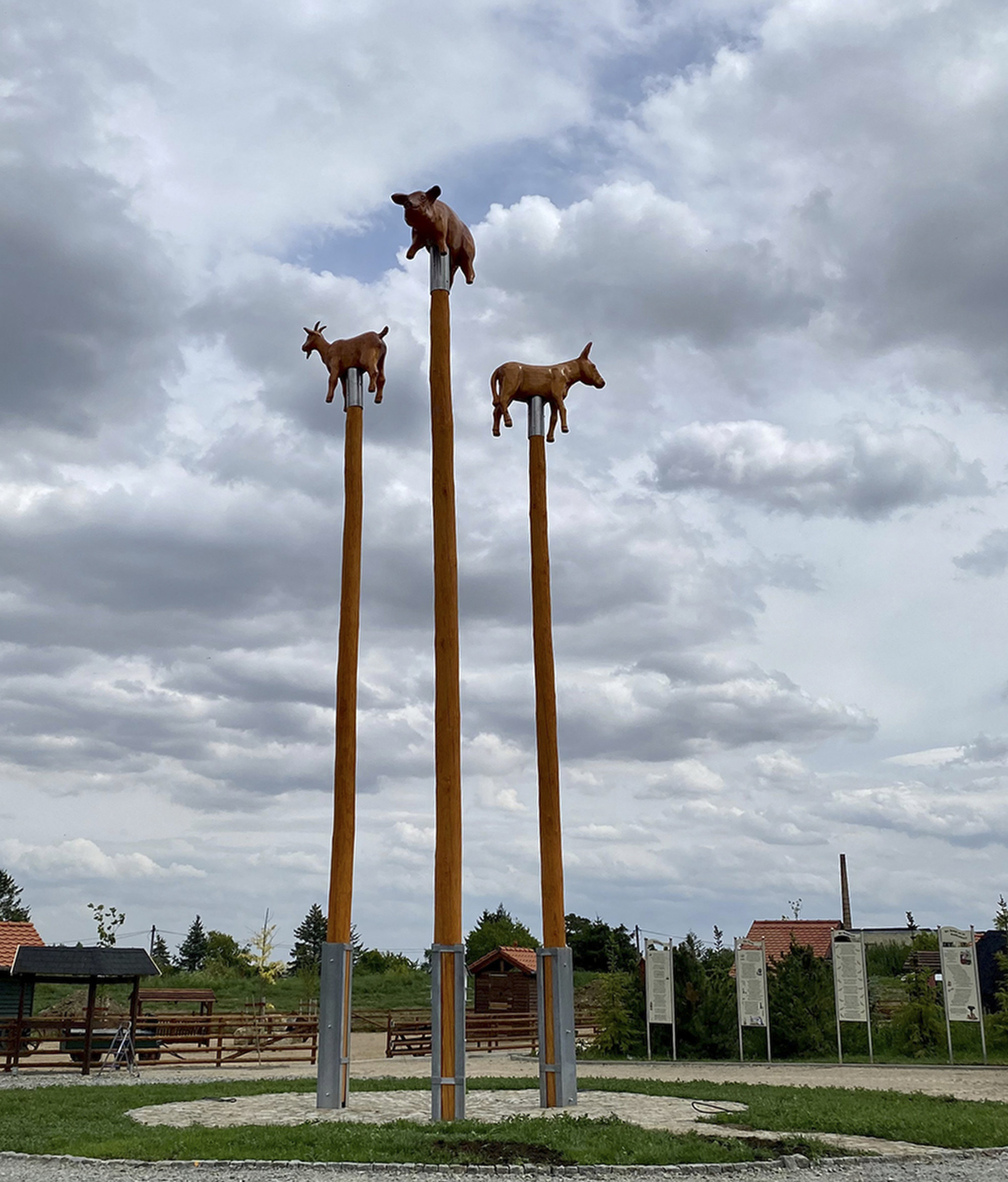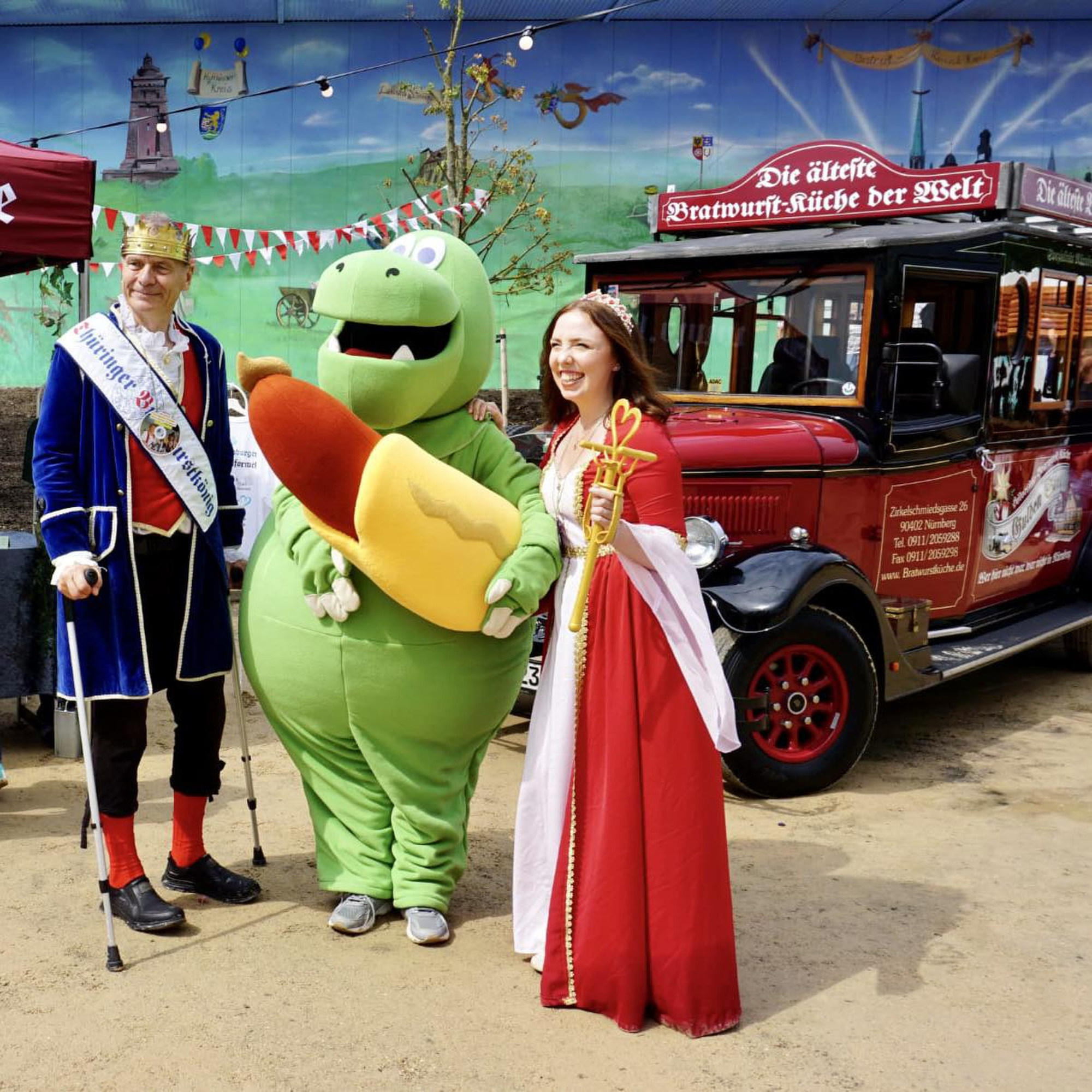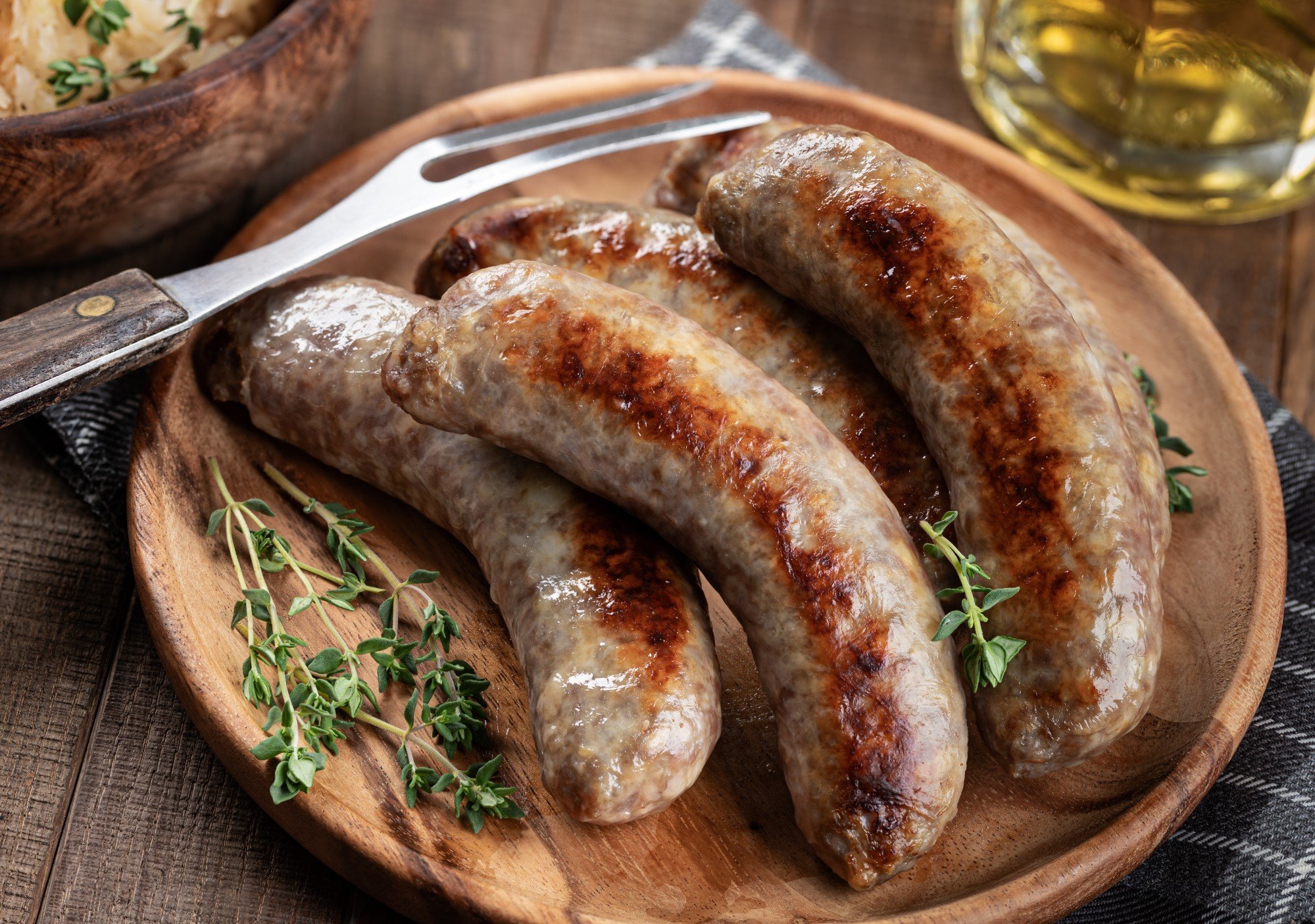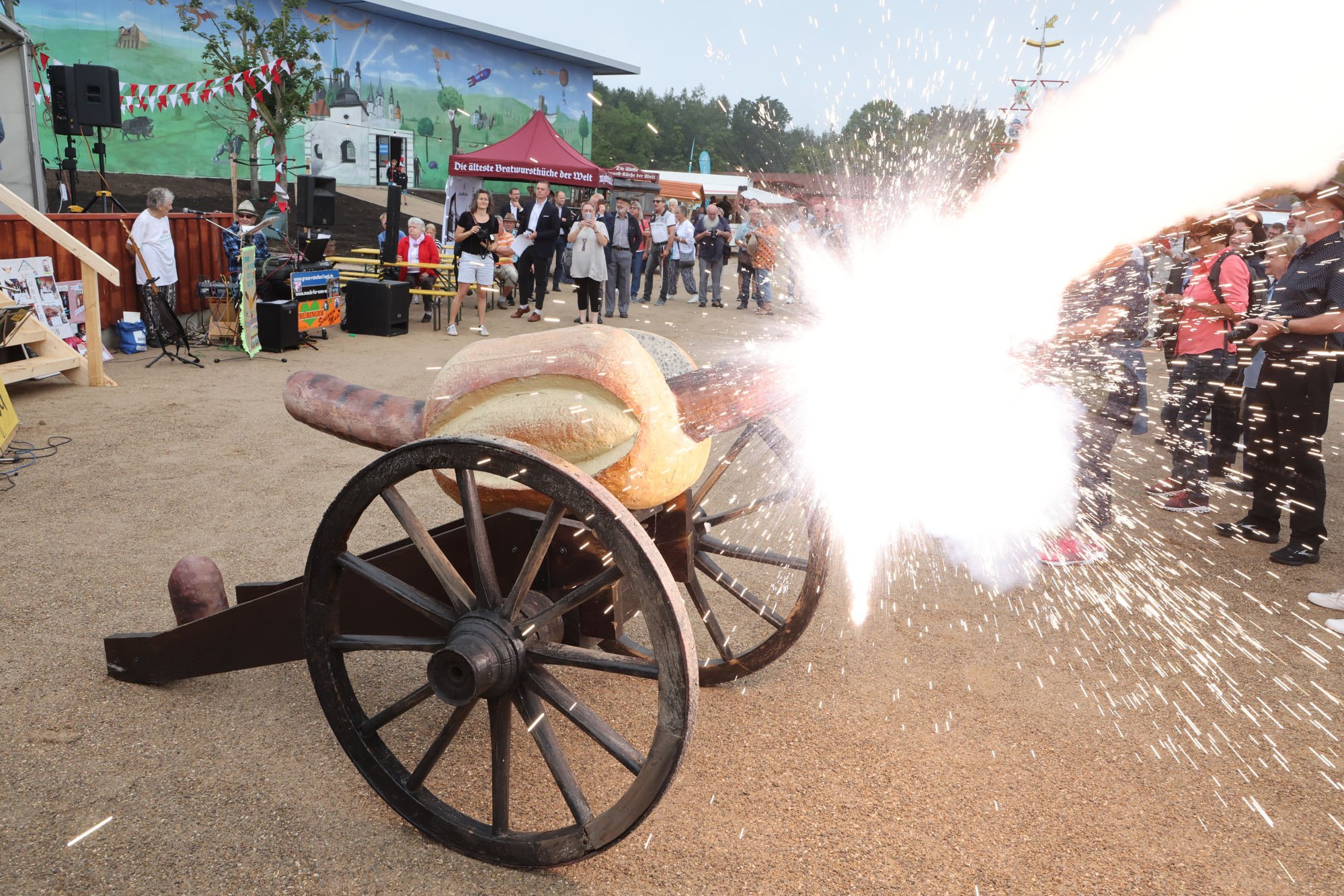The story of the bratwurst goes back to the hilly forests of central Germany, a place where local butchers preferred a large and juicy sausage, one that was far too big to fit into a bread roll – but that was served in one anyway.
We’re talking about the bratwurst of Thuringia, a place now celebrating its sausage heritage with a new museum, doubling in size after relocating its old museum to the historic forest town of Mühlhausen in August.
Until 2019, the museum was based in another part of Thuringia, but reached its capacity of around 70,000 visitors a year. The proposed move caused controversy because the new location was on the site of an annex of the Nazi Buchenwald concentration camp. This was solved when town councillors offered a different site for the museum.
Beyond being a veritable European sausage capital, the quaint medieval town of Mühlhausen, about three hours south of Berlin by train, is well worth a visit to see its historic town centre, much of which survived the Allied bombings of World War II.

But the focus now is on the region’s well-preserved bratwurst tradition, which dates back more than 600 years. The Thuringian bratwurst was first mentioned in an account book of the Arnstadt virgin monastery in 1404.
The tongue-in-cheek show explores the cult of the Thuringian sausage with historical documents, butcher’s equipment and tools like meat grinders and sausage syringes – as well as sausage-related art, curiosities and kitsch.
Since 2003, the Thuringian Rostbratwurst, largely a pork sausage, has been protected by the EU as a regional delicacy, putting it on par with Parma ham and champagne.
Celebrating Chinatowns – our list of cookbooks, photos and videos
Celebrating Chinatowns – our list of cookbooks, photos and videos
The four-hectare site also features a “sausage house” with 120 seats for events and celebrations, a show and spice garden, as well as a farm and an animal enclosure for children.
Around €5 million (US$5.4 million) has been invested in the new site, according to the Friends of Thuringian Bratwurst association which runs the museum.
Construction began about three years ago but was delayed by the coronavirus pandemic, inflation and a labour shortage.

In Thuringia, around 38,000 tonnes of the protected sausage are produced annually, and even amid growing vegetarian and vegan movements in Europe, production in this part of Germany has more than doubled since 2003.
The museum itself is largely in German, but the exhibits and the taste of your post-tour bratwurst will speak for themselves.
Thuringia’s Bratwurst Museum isn’t even the only such museum in Germany, but it was the first, having opened in another part of the state in 2006, when it was the country’s only bratwurst museum in Germany at the time.
Further south, Germany’s sausage-loving state of Bavaria has its own rival bratwurst museum in the city of Nuremberg, also known for its winter markets and penchant for hearty comfort food. This city also lays claim to some of Europe’s oldest sausage heritage.
Serious sausage fans should consider a trip to both museums, however, since the central German Thüringer Rostbratwurst is quite different to its Bavarian counterpart.

A bratwurst in Germany comes in all kinds of sizes, and can be coarse or fine, grilled on coals or in a pan and with a wide variety of ingredients: besides meat, these include herbs and spices. Cheese, wine, schnapps and even chocolate are sometimes found in the filling.
The Thuringian is a large, plumper and somewhat juicier sausage, typically served in a bread roll with mustard, and is more or less the variety that made it to North America as the “brat”.
The Nuremberger, meanwhile, is a smaller, firmer and more heavily spiced sausage, and Bavarian restaurants will often sell six of them served on sauerkraut. You can also order Drei im Weggla – three sausages in a bread roll.
‘Expensive and fake’: German influencer accuses China festival over diluted beer
‘Expensive and fake’: German influencer accuses China festival over diluted beer
Perhaps the weirdest thing about this tourist attraction is that you can’t eat any bratwurst there.
Unlike Ireland’s Guinness factory, which rewards visitors with a freshly pulled pint of the black stuff at the end of the tour, Nuremberg’s bratwurst museum isn’t about tasting the thing you’re learning about.
Instead, curators assume that you’re just coming from – or about to seek out – one of the city’s many bratwurst stands.
After all, sausages are omnipresent in Germany, and you won’t have to walk far from the museum to find one. Whether at barbecues, festivals or football matches, there are countless settings in German life where the bratwurst is simply a requirement.

According to the German Butchers’ Association, people in Germany eat an average of 2.7 kilograms (6lbS) of bratwurst per capita each year – a figure that has remained stable in recent years despite the trend towards a more balanced and meat-free diet.
Many Germans would argue that no self-respecting football stadium or winter market would even bother opening without first setting up a bratwurst stand with an ample supply of mustard.
So whether you make it to Nuremberg or Mühlhausen or not during your Germany trip, there’s still a strong chance that you’ll be able to sample the local sausage culture.

